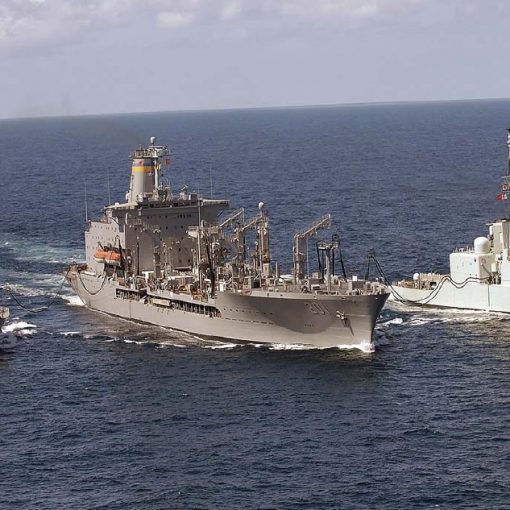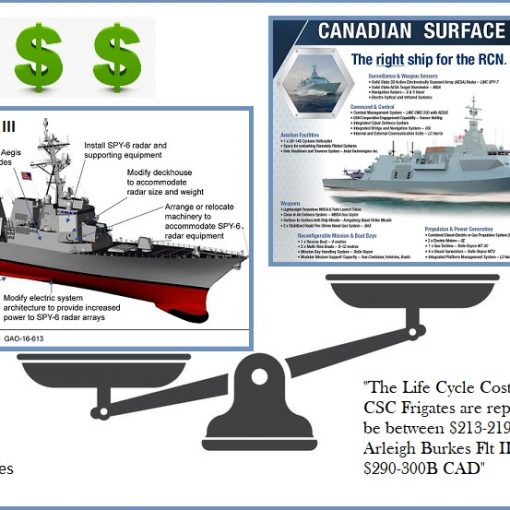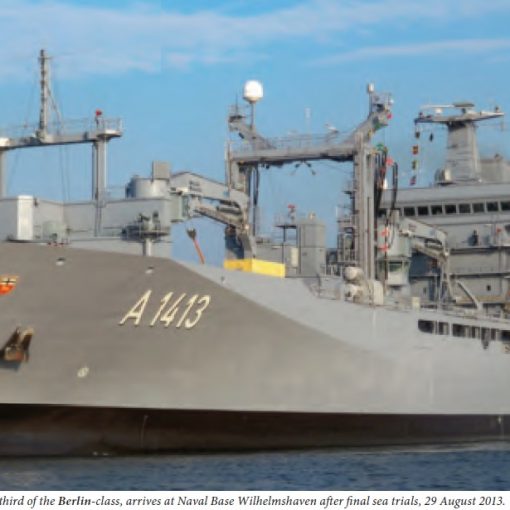[FAKE NEWS] Canada’s Two New Humanitarian Aid Ships Enter Service!
Imagine that the Canadian government has just welcomed two humanitarian assistance/disaster relief ships to the Canadian fleet. MV Norman Bethune with her home port on Canada’s East Coast has been tasked with humanitarian aid to the Caribbean, Eastern Mexico, eastern North, South and Central America, Europe, West Africa and the Mediterranean. The second ship, MV Lucille Teasdale-Corti, with her home port on Canada’s West Coast, has been tasked with aid missions to western North, South and Central America, the Pacific Islands, Australis and east Asia, Japan, China, India and east Africa.
The two ships are owned by Canada and managed by the Ministry of Foreign Affairs. They are manned by the non-military Canadian Coast Guard. Their purpose is to provide HA/DR. The ships are capable of immediate deployment to areas devastated by natural or man-made disasters or disease. They have no need for an established port. They can go wherever they are needed. At nearly 800 feet long, these dedicated HA/DR ships, are complete with 200 bed hospitals with full surgical capability and large temporary refugee spaces capable of providing temporary safe quarters for up to 500 people for up to a week. The two ships carry their own heavy-lift helicopters for moving supplies to inland remote bases as well as smaller helicopters for air ambulance duties, emergency evacuation and search and rescue. In order to ensure that aid and material can be delivered effectively, these ships are capable and equipped for both roll-on/roll-off and amphibious landing of supplies. They are stocked and ready with 5,500 lane metres of space for emergency supplies, equipment and vehicles including up to 150 trucks, bulldozers and ambulances. The ships can manufacture and deliver vast quantities of clean drinkable water and can produce sufficient electricity to power inland hospitals and relief facilities up to 15 kilometres away.
Canadian Coast Guards personnel run the ship. RCAF pilots and RCN personnel operate the large cargo helicopters and amphibious landing craft. All direct humanitarian assistance activities are performed by experts in their field. Non-governmental organizations (NGOs) working in harmony with the two support ships to provide their own expert services. Doctors from Médecins Sans Frontières staff the hospitals while experts from the International Red Cross, Nazarene Disaster Response, REACT International and others manage and control rescue and aid operations.
Like the two Canadian doctors for whom these ships are named, these ships are ready and willing to go where they are needed, when they are needed to provide assistance to any and all who need it without regard for socioeconomic, political or religious concerns.
Can this be ‘Real’ News?
These ships are totally possible. Davie Shipyards with the Asterix project has proven that a container ship can be rebuilt as a navy replenishment ship. Surely then two roll-on/roll-off passenger (ROPAX) ships can be converted into purpose-built HA/DR ships. Because there is no need for these ships to be militarized, they can be totally commercial designs. There is not a great deal of conversion necessary. Externally there would be a need for reinforcement for helicopter landing pads and hangars as well as a launching facility for landing craft. Internally passenger space would have be replaced with a hospital and refugee spaces and water and power generation facilities would need to be installed. Compared to the complete morphing of a container ship to an at-sea replenishment ship, this seems a relatively simple project.
But how much would this cost, you ask, and who would pay for these ships? Canada’s international assistance spending annually totals about CAD$5.5 billion (CAD$5.4 billion in 2016 and CAD$5.8 billion in 2015)1 Two brand-new ROPAX ships launched in 2010 – Stena Brittanica and Stena Hollandica, the largest ROPAX combined freight and passenger ferries in the world – were constructed at a combined cost of £375m ($594 m).2 The two ships are 240 metres (787 ft) long. (Note that Asterix by comparison is 182.5 metres (598 ft) long. Stena Brittanica has 1,376 passenger beds (think hospital and refugee space) and 5,500 lane metres of vehicle and cargo storage.
Based upon this data alone, Canada could provide two HA/DR ships with an initial cost equal to approximately 20% of a single year’s aid budget. Annual maintenance for such ships should equal about 1% of annual aid. But considering that a HA/DR ship’s sole purpose is to provide assistance, this would seem to both reasonable and an effective use of taxpayer money. The government would simply be spending the same humanitarian (foreign) aid money as was going to be spent anyway and they would still be spending in on aid.
I think that Canada is already seen to be a compassionate country, interested in helping those in need. MV Norman Bethune and MV Lucille Teasdale-Corti would the physical manifestation of that reputation.
Notes
- See Canadian International Development budget.
- See Ship-Technology.com.





4 thoughts on “HA/DR from Canada, Part 2”
This may be not quite “Fake News” as most may think. Now that the 2018 NATO Summit has apparently passed a referendum to have all NATO countries contribute as a minimum at least 2% GDP to defence, does this mean Canada will be doing this no later than 2024? The Prime Minister has just met with the Spanish PM this week at the NATO Summit 2018 as well. Is this also an indication that Canada may want to acquire Spanish Juan Carlos Class LHDs for the RCN to create an Amphibious Sealift Capability for both East & West Coasts? These are excellent ships specifically targeted for humanitarian assistance and disaster relief (HA/DR) capability. This would give Canada a significant HA/DR and expeditionary force capability that it has not had for a very long time. These ships are perfect to load Canadian Army Batallions with all their equipment including helicopter/fixed wing aircraft. These ships would give Canada the potent sealift capability we have been sorely missing. If so, it is about time we did this, and the 2% of GDP commitment would surely help greatly in this endeavour!
While many people conflate military ships with humanitarian aid ships, the logic doesn’t follow. One of the justifications for Canada’s new surface combatant ships was that they were designed to provide humanitarian aid. Military ships are loaded with weapons, tanks, cannons and attack helicopters and not tents, blankets, food including baby formula and medicine to combat disease from polluted water. They don’t carry sufficient doctors nor do they carry rescue and relief experts. Assuming a warship could carry disaster relief supplies, they would first have to find a suitable harbour in which to offload their military supplies and replace them with humanitarian or disaster relief supplies before they could head for the area of need. Let’s quit using humanitarian aid as an excuse or justification for more warships.
ADD ME TO YOUR MAILING LIST
DONE.